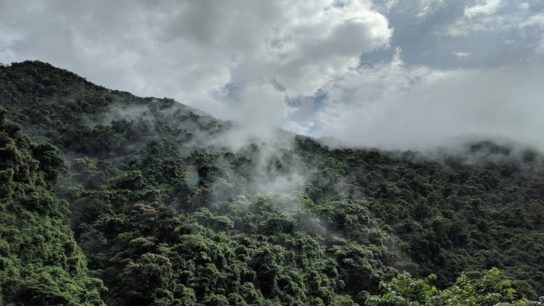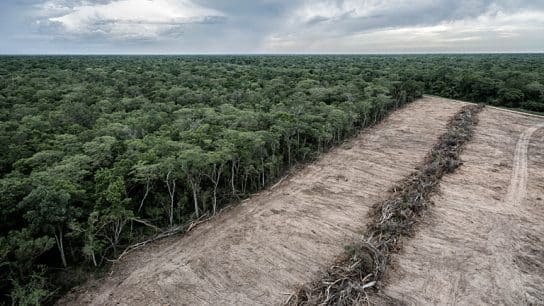The Nature Conservancy is calling on the public to voice their support for greater marine conservation in Hong Kong’s updated Biodiversity Strategy and Action Plan, which is now open for public consultation for the next two months.
—
The Nature Conservancy (TNC) on Thursday called on the Hong Kong government to prioritize marine conservation and oyster reef restoration.
Hong Kong’s Agriculture, Fisheries and Conservation Department (AFCD) is set to launch an updated Biodiversity Strategy and Action Plan (BSAP) by the end of 2025. First formulated in 2016 and updated every five years, the document informs conservation of local biodiversity and sustainable development in the city.
In a press release published Thursday, the Nature Conservancy (TNC), the world’s leading international conservation non-profit organization, urged the AFCD to include robust measures to protect and restore vital coastal ecosystems – particularly oyster reefs – which are among the most endangered marine habitats globally.
Despite Hong Kong’s rich marine biodiversity – home to over 5,900 species, or more than one-quarter of all marine species recorded in mainland China – marine conservation efforts have lagged far behind those on land. Only about 6% of Hong Kong’s marine waters are protected, well below the global target of 30%. Many ecologically important habitats, including oyster reefs, remain outside of protected areas and face persistent threats, particularly in western waters.

Oyster and other shellfish reefs deliver vital benefits to people and the planet, including, fish production, regulating water quality and coastal protection. Yet, over the past two centuries, more than 85% of the world’s shellfish ecosystems have been lost. In Hong Kong, a city largely built with limestone derived from oyster shells, historical dredging, reclamation, and urban development have decimated once-abundant oyster habitats.
Any remaining oyster reefs today are not officially recognized as ecologically important, are unprotected and therefore highly vulnerable to ongoing harvesting, degradation and reclamation projects. This includes the proposed Kau Yi Chau Artificial Islands, which do not take shellfish reefs into account when conducting the Environmental Impact Assessment.

“Ecological restoration presents a huge opportunity for nature and people. However, ecological restoration is not without its challenges, that’s why it cannot replace nature conservation, and should never be used to justify the destruction or degradation of ecosystems,” said Marine Thomas, Associate Director of Conservation, The Nature Conservancy Hong Kong (TNC).
With the BSAP now under review, the public has a once-in-a-decade opportunity to advocate for stronger marine conservation policies and the health of Hong Kong waters, TNC said on Thursday. The organization will be submitting formal recommendations to AFCD and encouraged the public to take part by submitting their views before the deadline on July 11.
TNC’s Key Recommendations for the BSAP
To reverse biodiversity loss and strengthen coastal resilience, TNC recommends that the updated BSAP prioritize the following:
Expand Marine Protected Areas (MPAs) to safeguard coastal ecosystems
- Scale up protection in line with the global “30×30” target by designating new MPAs and implementing other effective area-based conservation measures (OECMs).
- Prioritize the inclusion of biodiversity hotspots and underrepresented habitat types, notably areas such as South Lantau, Tung Chung, Port Shelter, and the coastal area of Deep Bay.
Initiate large-scale restoration of degraded oyster ecosystems to reverse biodiversity loss and improve water quality
The 2030 Global Biodiversity Framework recognises that conservation alone is not enough – restoration must be scaled up to reverse biodiversity loss. TNC and the University of Hong Kong have conducted territory-wide feasibility assessments, showing that oyster reef restoration is both scientifically sound and technically feasible. The key barrier is access to suitable seabed areas. To restore these vital ecosystems, we should:
- Include targeted restoration strategies in marine park management plans.
- Make seabed areas available for restoration efforts outside of protected areas.
- Launch reef restoration projects in at least 30% of suitable bays by 2030, to enhance biodiversity, improve water quality, and rebuild ecosystem resilience.
Strengthen legal protection for endangered species and ecosystems
- Establish and maintain an up-to-date list of locally threatened species and ecosystems to inform conservation priorities. To support this, TNC – together with the University of Hong Kong – is currently conducting an IUCN Red List of Ecosystems assessment for Hong Kong’s oyster reefs, providing the scientific foundation needed to formally recognise and protect these endangered habitats.
- Update and amend legislation to formalize the list and extend legal protection to currently unprotected but endangered species – including oysters and key marine fishes.
- Develop species-specific action plans to recover endangered ecosystems such as oyster reefs, through expanded protected areas and scaled restoration.

“This is a critical opportunity to share your voice in shaping the future of Hong Kong’s marine environment. We stand at a crossroads; if we act now, we can bring back these once abundant ecosystems, securing cleaner water, healthy fisheries, and stronger coastlines for future generations, or we continue to destroy our oceans, possibly to a point of no return,” said Thomas.
—
To learn more about oyster reefs and why they matter to Hong Kong, TNC is featured in the documentary City of Shells: Our Forgotten Oyster Reefs, which explores the ecological, cultural, and historical significance of these lost ecosystems – and the opportunity to restore them. Watch the documentary at www.cityofshells.com.
Featured image: Derek Tang.














